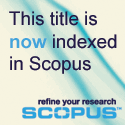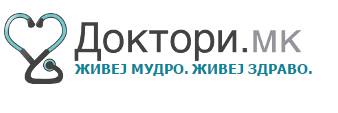JSER Policies
JSER Online
JSER Data
Frequency: quarterly
ISSN: 1409-6099 (Print)
ISSN: 1857-663X (Online)
Authors Info
- Read: 72417
|
ДИЈАГНОСТИКА БАЗИРАНА ВРЗ ДОКАЗИ ПРИ НАРУШУВАЊА НА ГЛАСОТ: ТЕОРЕТСКИ ПРЕГЛЕД И МОДЕЛ
|
|
EVIDENCE-BASED ASSESSMENT OF VOICE DISORDERS: A THEORETICAL OVERVIEW AND MODEL
|
|
Добринка ГЕОРГИЕВА1
Ана СТЕФАНОВСКА2
|
|
Dobrinka GEORGIEVA,1
Ana STEFANOVSKA2 |
|
Југозападен универзитет (ЈЗУ),
Благоевград, Бугарија1,
Студент на магистерски студии, (ЈЗУ),
Благоевград, Бугарија2 |
|
South West University (SWU),
Blagoevgrad, Bulgaria1,
Master degree student, SWU, Blagoevgrad, Bulgaria2
|
|
Вовед |
|
Introduction |
|
|
|
|
|
Бугарските логопеди сè уште не се запознаени со моменталната парадигма на Практиката базирана врз докази за ефективност (1, 2) кој што е многу популарен концепт во земјите на Европската Унија, САД, Австралија, Канада и др., и се разгледува како фундаментален во логопедската практика (3 – 6). Контроверзен и тежок е проблемот во однос на нејзиното проценување и покрај тоа што дијагностиката и терапијата на нарушувањата на гласот се мошне напреднати во последните две децении (7, 8, 9). Некои од водечките професионалци во областа на гласот, укажуваат дека логопедот треба да биде запознаен со темите сврзани со вокалните механики, патологијата на гласот и знаења за менаџмент на поведението, при клиничкиот процес на дијагностика и терапија (10). |
|
Bulgarian speech therapists are still not familiar with the current paradigm of Evidence-Based Practice (EBP) (1, 2). EBP is a very popular concept in the European Union countries, USA, Australia, Canada, etc., and regarded as fundamental to the speech therapy practice (3 – 6). Appraising is a controversial and complicated issue, regardless of the advancement made in the sphere of voice disorders’ assessment and treatment over the last two decades (7, 8, 9). Some of the leading professionals in the voice area mentioned that speech therapists must be familiar with the topics related to vocal mechanics, voice physiology and behaviour management skills, during the clinical process of diagnosis and therapy (10). |
|
|
||
|
|
|
|
|
Методологија |
|
Methodology |
|
|
|
|
|
Овој труд е теоретски преглед на специјализираната литература за Дијагностиката базирана врз докази при нарушувањата на гласот (ДБДНГ), во странство и во Бугарија. Компаративната анализа е основниот метод. |
|
The present article is a theoretical overview of the specialized literature of EBP in voice disorders assessment in |
|
|
|
|
|
Теоретски преглед и дискусија |
|
Theoretical overview and discussion |
|
|
|
|
|
Нова парадигма се појави во полето на здравствената грижа, нагласувајќи ја важноста на научниот доказ во донесувањето на клиничко решение при нарушувањата на гласот (11, 12). |
|
This new EBP paradigm emerged in the field of health care in order to emphasize the importance of scientific evidence in guiding the clinical decision making processes in the case of voice disorders (11, 12). |
|
|
||
|
Има докази дека програмата користи клинички исходи, кои се фокусирани на значајните промени во комуникациските функции, како мерење на самоосознаените функции на слухот и рамнотежата и на функциите при нарушувања на говорот, јазикот, гласот и голтањето, прифаќање на препораки, функционална промена во статусот, и сатисфакција на пациентот/клиентот/семејството.
|
|
There is evidence that the program uses clinical outcomes that focus on meaningful changes in communication functions, such as measures of self-perceived hearing and balance functions and measures of function in speech, language, voice and swallowing disorders, acceptance of recommendations, functional change in status, and patient/client/family satisfaction. |
|
Се придава големо значење на оценување на резултатите од терапијата од страна на пациентот/клиентот. Тие не се ограничени на идентификацијата, но може да ја вклучуваат (13, 14).
|
|
Patient/client evaluation of the outcomes are emphasized. These may include identification, but are not limited to it.”(13,14). |
|
Дефиницијата за нарушувања на гласот вклучува: секое отклонување на височината, силата, квалитетот или друг основен вокален атрибут, кое што консистентно ја попречува комуникацијата, привлекува несакано внимание, неблагопријатно го афектира говорникот или слушателот, или гласот е несоодветен за возраста, полот или можеби културата или средината на индивидуата, може да биде од органска или функционална природа и може да е резултат на нарушувања на ларингеалната функција или резонансата (15). |
|
Voice disorder’s definition includes any deviation in pitch, intensity, quality, or other basic vocal attribute which consistently interferes with the communication, attracts unwanted attention, adversely affects the speaker or the listener, or is inappropriate to the age, sex, or perhaps the culture or class of the individual; it may be organic or functional by nature and it may be a result of laryngeal function or resonance disorders (15). |
|
|
||
|
Некои од водечките американски автори, од перспектива на ДБДНГ тврдат дека квалитетот на здравствената грижа треба да биде поврзан со научен доказ за ефикасност и ефективност (14). Други истражувачи опишуваат основни упатства за клиничка практика базирана врз истражување, за диференцијација на стандарди, раководство и опција: |
|
Some of the leading American authors, from an evidence-based point of view, argued that the quality of health care should be linked to the scientific evidence on its efficacy (14). Other researchers described the research-based clinical practice guidelines for differentiating of standards, guideline and option: |
|
· Стандард – препорака за менаџмент на пациентот, која што одразува висок степен на точност, базирана врз ниво 1 или 2 (види Табела 1).
· Раководство – препорака за менаџмент на пациентот, која што одразува средна клиничка точност, обично базирана на ниво 2 или 3.
· Опција – стратегија за менаџмент на пациентот за која што доказот е неодреден или кога има противречив доказ или опција (16). |
|
· Standard – a recommendation for patient management that reflects a high degree of certainty based on Level 1 or very strong Level 2 evidence (see bellow Table 1).
·Guideline – a recommendation for patient management that reflects moderate clinical certainty, usually based on Level 2 or a strong consensus of Level 3 evidence.
· Option – a strategy for patient management for which the evidence is inconclusive or when there is some conflicting evidence or option (16). |
|
Во полето на нарушувања на гласот (како дел од логопедијата), резултатот од терапијата е подобрување на гласовните карактеристики и квалитет, за возможна и ефективна комуникација (14). Базата на докази за нарушувања на гласот ја вклучува специјалната класификација за евиденција. На Табела 1 се покажани четирите нивоа на докази. |
|
In the field of voice disorders (as a part of the speech-language pathology) the therapy outcome is the improvement of the voice characteristics and the quality of potential effective communication (14). The base of evidence for voice and other communication disorders includes the special grading for records. Table 1 is showing the four levels of evidences. |
|
|
||
|
Табела 1. Класификација на доказите |
|
Table 1. Grading system of the evidence |
|
Ниво 1 / (Level 1) |
Рандомизирани контролирани испитувања /
Randomized control trial evidence |
|
Ниво 2 / (Level 2) |
Нерандомизирани групни испитувања /
Non-randomized group studies |
|
Ниво 3 / (Level 3) |
Случај / Case study (non experimental design) |
|
Ниво 4 / (Level 4) |
Мислење на специјалистот / Expert opinion |
|
|
||
|
Пред започнување на процесот на дијагностика, логопедот треба да ги согледа целите на терапијата во случај на нарушувања на гласот:
|
|
Before starting the assessment process, the SLP must realize the treatment aims in the case of voice disorders, which are as follows: |
|
1. Услугата треба да им биде достапна на клиентите во различни институции (клинички, социјални, образовни).
2. Услугата треба да им овозможи на клиентите да се справуваат со своите гласовни слабости ефективно и да комуницираат послободно.
3. Да обезбеди сеопфатна и ефективна услуга за деца и возрасни со нарушувања на гласот. |
|
1. The service should be accessible to clients in a variety of settings.
2. The service should enable clients to manage their voice impairments effectively and communicate more freely.
3. To provide a comprehensive and effective service to pre-school, adolescents and adults with voice disorders. |
|
|
|
|
|
Табела 2. ICF кодови, релевантни за нарушувањата на гласот (17) |
|
Table 2. describes the ICF specific Codes Relevant to the Voice Disorders (17) |
|
(ICF кодови на компонентите и опис на специфичните кодови) |
|
(ICF Component Codes and Description of the specific codes) |
|
Телесни структури /
(Body Structures) |
s110 Структура на мозокот / Structure of the brain
s1106 Структура на кранијалните нерви / Structure of the cranial nerves
s340 Структура на ларинксот / Structure of the larynx
s3400 Гласни жици / Vocal folds |
|
Телесни функции /
(Body Functions) |
b126 Функции на темпераментот и личноста / Temperament and personality functions
b152 Емоционални функции / Emotional functions
b310 Функции на гласот / Voice functions
b3100 Продукција на глас / Production of voice
b3101 Квалитет на гласот / Quality of the voice |
|
Активности и
учество во нив /
(Activities and
Participation) |
d330 Говорење / Speaking
d350 Разговор / Conversation
d360 Употреба на комуникациски средства и техники / Using communication devices and techniques
d3600 Употреба на телекомуникациски средства / Using telecommunication devices
d845 Добивање, задржување и прекратување на работа / Acquiring, keeping, and termination of a job
d850 Профитабилно вработување / Remunerative employment
d920 Рекреација и одмор / Recreation and leisure
d9204 Хоби / Hobbies
d9205 Социјализирање / Socializing |
|
Фактори на
животната средина /
(Environmental
Factors) |
e125 Продукти и технологија за комуникација / Products and technology for communication
e225 Клима / Climate
e2250 Температура / Temperature
e2251 Влажност на воздухот / Humidity
e250 Звук / Sound
e2500 Интензитет на звукот / Sound intensity
e2501 Квалитет на звукот / Sound quality
e260 Квалитет на воздухот / Air quality
e310-e399 Поддршка и односи / Support and relationships
e410-e499 Ставови / Attitudes
e515 Архитектура и конструкциски услуги, системи и полиси /
Architecture and construction services, systems and policies
e580 Здравствени услуги, системи и полиси / Health services, systems and policies |
|
|
||
|
Концептуалната рамка на резултатите на пациентите во процесот на дијагностика и терапија на гласот е базирана врз Меѓународната класификација на функционирањето, попреченоста и здравјето на Светската здравствена организација (ICF). Таа беше адаптирана за да ги опише последиците од нарушувањата на гласот (17). Прво, ги опишува нарушувањата на гласот под четирите клучни компоненти според ICF: телесни функции, телесни структури, активности и учество во нив, и фактори на животната средина и лични фактори. Потоа се опишани инструментите за дијагностика и терапија на нарушувања на гласот, со употреба на концептот на ICF (18, 19).
ICF предлага одличен концепт за проширување на дијагностиката на нарушувањата на гласот од едностран до похолистичен пристап, преку сите четири, горенаведени компоненти од ICF. Штом веќе еднаш концептот на резултатите на гласот е опишан преку средствата на дефинициите и ICF моделот, логопедот може да ги селектира соодветните мерки (в. Прилог 1). |
|
The conceptual framework of the patient outcomes in the assessment and treatment process of his/her voice is based on the World Health Organization’s International Classification of Functioning, Disability and Health (ICF). It was adapted to describe the conesquences of voice disorders (17). First, it describes voice disorders under the four key components of the ICF: Body Functions, Body Structures, Activities and Participation, and Contextual (Environmental and Personal) Factors. It then describes the assessment and treatment tools for voice disorders using the ICF framework (18, 19).
The ICF provides an excellent framework for extending voice assessment from narrowed to more holistic approach, by taking all four ICF components mentioned above. Once the concept of voice outcomes is described by using definitions and the ICF model, the speech therapist can select the appropriate measures (see attachment 1). |
|
Дијагностиката и собирањето на информации треба да вклучуваат: |
|
Assessment and info gathering must include: |
|
1. Способностите за комуникација треба да бидат оценувани според различни контексти.
2. Историја на случајот.
3. Инструментална евалуација. |
|
1. Communication abilities that need to be assessed across a range of contexts;
2. Case history;
3. Instrumental evaluation. |
|
На Табела 3 се опишани инструментите достапни за дијагностика, главно на телесните функции (2) и (3) активностите и учеството во нив. |
|
Table 3 describes the tools available for assessing primarily the body function (2) and (3) activities and participation. |
|
|
|
|
|
Табела 3. Компоненти кои даваат сеопфатен преглед на нарушувањата на гласот и водење на документација на резултатите од терапијата.
|
|
Table 3. Components providing comprehensive view of voice disorders and guiding the documentation of the treatment outcomes. |
|
Компоненти за мерење
(Components for measurement) |
Препорачан инструмент за ефективност
(Recommended effectiveness instrument) |
|
Евалуација на функцијата на
телото и дијагностика
на нарушувањето на гласот /
Body Function Evaluation and assessment of the voice disorder |
Протоколи за глас, според Boone / Boones voice protocols (22; 23)
Протоколи за глас, според Pindzola / Pindzola, (1987) voice protocols (24)
GRBAS скала, според Hirano / Hirano’s GRBAS scale (25)
CAPE-V (Консензус аудитивно- перцептуална евалуација на гласот, види www.asha.org) / CAPE-V (Consensus Auditory-Perceptual Evaluation of the Voice, see www.asha.org ) |
|
Акустично мерење на
функцијата на телото со
CSL (MDVP, Visi-Pitch II) /
Body Function Acoustic
measurement by CSL
(MDVP, Visi-Pitch II) |
Протокол на поддржана фонација– Фундаментална честота (Hz) /
Vowel supported protocol - Fundamental frequency (Hz)
1. Удобна височина – Jitter (%, msec) / Comfort pitch – Jitter (%, msec)
2. Висока височина – shimmer (db) / High pitch – shimmer (db)
3. Ниска височина – сооднос на хармонија-шум / Low pitch – harmony-to-noise ratio
4. Мек кон силен глас – најниска сила (db); највисока сила (db) /
5. Soft to loud voice – lowest intensity (db); highest intensity (db)
6. Читање на текст – фундаментална честота при говорење; вообичаена сила (db) /
7. Recitel of passage –fundamental frequency during speaking; habitual intensity (db)
Разговор – фундаментална честота при говорење /
Conversation –fundamental frequency during speaking |
|
Активности и учество /
(Activities and participation) |
Скала за Квалитет на комуникативниот живот, по ASHA /
ASHA Quality of Communicative Life Scale (27) |
|
|
Индекс за нарушување на гласот- (Voice Handicap Index-VHI) /
Voice Handicap Index (VHI) (28) |
|
|
Квалитет на животот, сврзан со гласот (Voice Related Quality of Life V-RQOL) /
Voice Related Quality of Life (V-RQOL) (29) |
|
|
Преглед на добиените резултати за гласот / Voice Outcome Overview (30) |
|
|
||||
|
Применувањето на дијагностиката на нарушувања на гласот од ICF, е од суштинско значење за да се постигне крајната цел за подобрување на квалитетот на живеење на индувидуата − тоа е една од првите цели на логопедијата како здравствена професија. |
|
The ICF voice disorders’ assessment application is essential to achieve the ultimate goal of enhancing the quality of life of individuals. This goal is among the major targets of the speech therapy as a health profession. |
||
|
|
|
|
||
|
Заклучок |
|
Conclusion |
||
|
|
|
|
||
|
Дијагностиката базирана врз докази при нарушувања на гласот, треба да биде широко усвоена како база за дијагностика на нарушувањата на гласот. Погоре опишаните процедури треба да бидат развиени и дистрибуирани, што ќе им овозможи на студентите и логопедите критички да ги оценуваат извештаите од терапијата. Намената на ДБДНГ е да биде точно такво средство: во согласност ги надополнува постоечките препораки во медицината базирана врз докази и во пошироката наука на евалуација на резултатите од терапијата (3). Бугарското здружение на логопеди, треба да ги елаборира стандардите за применување на Практиката базирана врз докази при дијагностика и терапија на нарушувањата на гласот. Стандардите треба да бидат прифатени од универзитетските органи и да бидат вклучени како одделна дисциплина во научната програма на студентите по логопедија. Бугарија треба да го подобри квалитетот на програмата и да гарантира усовршување на професионалното образование и обучување (26). Од август 2010 EBP беше вклучена како нов стандард за почетна обука на студентите по Логопедија (20). |
|
The evidence-based practice must be widely adopted as a basis for voice disorder assessment. The procedures described above must be developed and distributed in the way that they will allow students and speech therapists to critically appraise treatment research reports. The EBP is intended to be such an instrument: it is consistent with and complements existing recommendations in evidence-based medicine and in the broader science of treatment outcome evaluation (3). The Bulgarian Society of Speech Therapists must develop standards for applying EBP with respect to the assessment and therapy of voice disorders. These standards have to be accepted by the universities and included into the academic curricula of speech therapy as a separate course. |
||
|
|
|
|
||
|
Прилог 1. Пример на компјутерски форматиран документ за собирање на податоци (21). |
|
Attachment 1. Example of the data collection sheet as formatted on computer (21). |
||
|
Евалуација на пациентот
Упатство и информации за контакт
Демографски податоци:
Презиме:
Име:
Пол:
Образование:
Професија:
Воннаставни активности:
Главни поплаки:
Зборови на пациентот
Времетраење
Почеток
Одвивање
Сврзани со други заболувања или симптоми
Медицинска историја:
Тежина
Операции
Медикаменти
Тутун
Кофеинови напитоци
Алкохол
Диета
Алергии
Кожни, мускулни, коскени, респираторни или дигестивни абнормалности
Физичко испитување:
Анатомска симетрија
Лабијална ДДК
Мобилност на јазикот
Веларна структура и функција
Ларингеална палпација
Време за голтање и координација
Инструментална дијагностика со CSL
Сооднос на зборови за минута
Диадохокинетичка задача
Сооднос С/З
Максимално време на фонација
Скала на квалитет на гласот (тежина= Х)
Генерално - 1, 2, 3, 4, 5
Грубост - 1, 2, 3, 4, 5
Недостаток на воздух (задушливост) - 1, 2, 3, 4, 5
Загуба на сила - 1, 2, 3, 4, 5
Напнатост - 1, 2, 3, 4, 5
|
|
Patient evaluation
Instructions and contact information
Demographics:
Last name:
First name:
Gender:
Education:
Occupation:
Extracurricular activities:
Chief complaint:
Patient’s words
Length
Onset
Course
Associations to other diseases or symptoms
Medical history:
Weight
Surgeries
Medical history
Medications
Tobacco
Caffeinated beverages
Alcohol
Diet
Allergies
Skin, muscle, bone, respiratory or digestive abnormalities
Physical examination:
Anatomical symmetry
Labial DDK
Lingual flexibility and sap
Velar structure and function
Laryngeal palpation
Swallow timing and coordination
Instrumental assessment
Word per minute rate
Diadocho-kinetic task
S/Z ratio
Maximum phonation time
Vocal quality scale (severity=X)
General – 1, 2, 3, 4, 5
Roughness - 1, 2, 3, 4, 5
Breathiness - 1, 2, 3, 4, 5
Power loss - 1, 2, 3, 4, 5
Strain - 1, 2, 3, 4, 5 |
||
|
Овој труд беше напишан во рамките на проектот на Националниот научен фонд „Дијагностика базирана врз докази при нарушувања на течноста на говорот и нарушувања на гласот (2009-2012)“. Раководител на проектот: Проф. Добринка Георгиева.
|
|
This article was written in the frame of the National Science Fund project “Evidence-based practice in fluency and voice disorders” (2009-2012). Head of the project: Prof. Dobrinka Georgieva. |
||
|
Citation:Georgieva D, Stefanovska A. Evidence-Based Assessment of Voice Disorders: a Theoretical Overview and Model. J Spec Educ Rehab 2011; 12(1-2):32-39. doi: 10.2478/v10215-011-0003-9 |
||||
|
Article Level Metrics |
||||
|
Литература |
References: |
|||
|
|
|||
Share Us
Journal metrics
-
 SNIP 0.059
SNIP 0.059 -
 IPP 0.07
IPP 0.07 -
 SJR 0.13
SJR 0.13 -
 h5-index 7
h5-index 7 -
 Google-based impact factor: 0.68
Google-based impact factor: 0.68
10 Most Read Articles
- PARENTAL ACCEPTANCE / REJECTION AND EMOTIONAL INTELLIGENCE AMONG ADOLESCENTS WITH AND WITHOUT DELINQUENT BEHAVIOR
- RELATIONSHIP BETWEEN LIFE BUILDING SKILLS AND SOCIAL ADJUSTMENT OF STUDENTS WITH HEARING IMPAIRMENT: IMPLICATIONS FOR COUNSELING
- EXPERIENCES FROM THE EDUCATIONAL SYSTEM – NARRATIVES OF PARENTS WITH CHILDREN WITH DISABILITIES IN CROATIA
- INOVATIONS IN THERAPY OF AUTISM
- AUTISM AND TUBEROUS SCLEROSIS
- THE DURATION AND PHASES OF QUALITATIVE RESEARCH
- REHABILITATION OF PERSONS WITH CEREBRAL PALSY
- DISORDERED ATTENTION AS NEUROPSYCHOLOGICAL COGNITIVE DISFUNCTION
- HYPERACTIVE CHILD`S DISTURBED ATTENTION AS THE MOST COMMON CAUSE FOR LIGHT FORMS OF MENTAL DEFICIENCY
- PEDAGOGICAL DIMENSIONS OF THE LEISURE
















